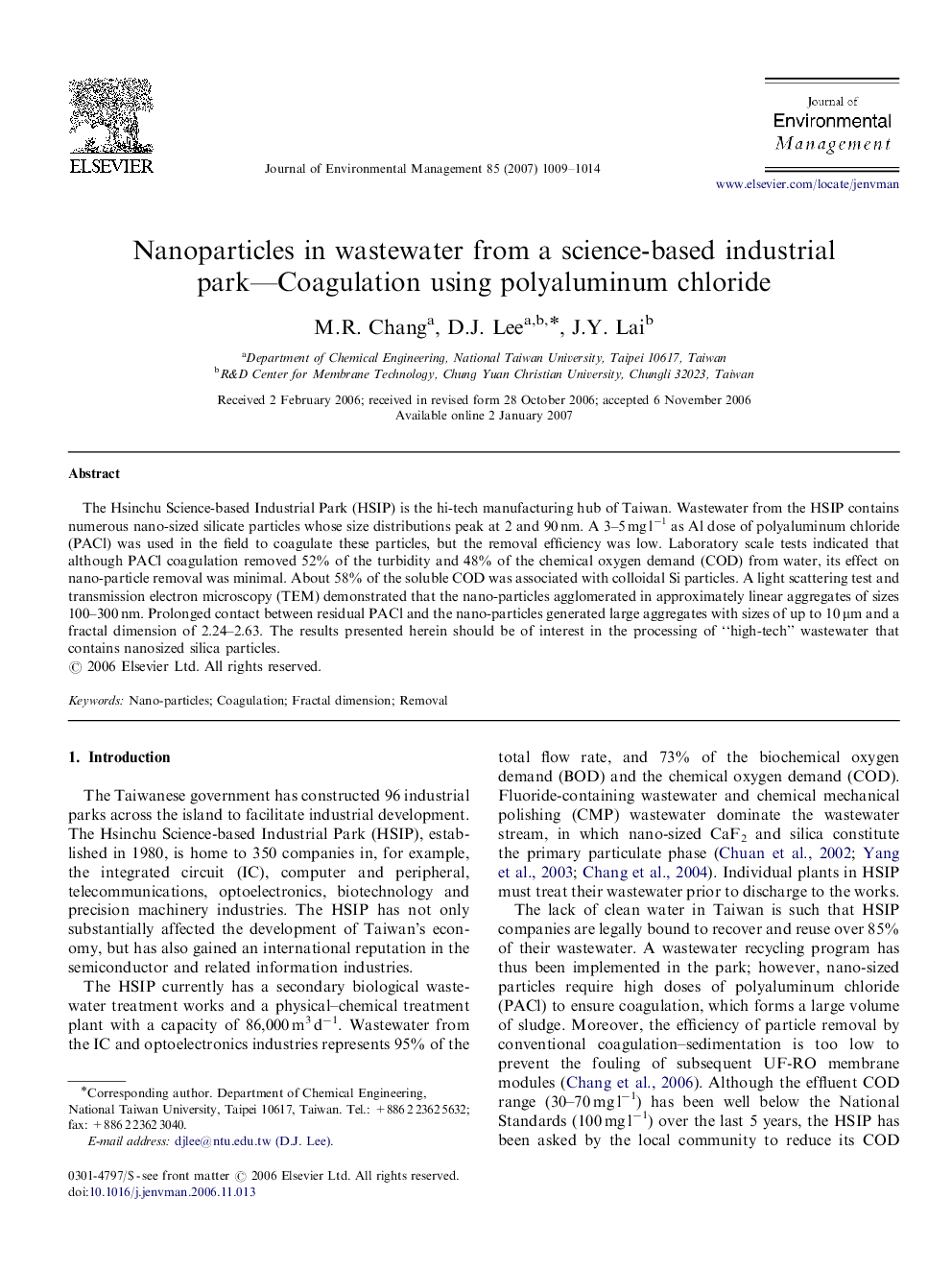| کد مقاله | کد نشریه | سال انتشار | مقاله انگلیسی | نسخه تمام متن |
|---|---|---|---|---|
| 1058504 | 947120 | 2007 | 6 صفحه PDF | دانلود رایگان |

The Hsinchu Science-based Industrial Park (HSIP) is the hi-tech manufacturing hub of Taiwan. Wastewater from the HSIP contains numerous nano-sized silicate particles whose size distributions peak at 2 and 90 nm. A 3–5 mg l−1 as Al dose of polyaluminum chloride (PACl) was used in the field to coagulate these particles, but the removal efficiency was low. Laboratory scale tests indicated that although PACl coagulation removed 52% of the turbidity and 48% of the chemical oxygen demand (COD) from water, its effect on nano-particle removal was minimal. About 58% of the soluble COD was associated with colloidal Si particles. A light scattering test and transmission electron microscopy (TEM) demonstrated that the nano-particles agglomerated in approximately linear aggregates of sizes 100–300 nm. Prolonged contact between residual PACl and the nano-particles generated large aggregates with sizes of up to 10 μm and a fractal dimension of 2.24–2.63. The results presented herein should be of interest in the processing of “high-tech” wastewater that contains nanosized silica particles.
Journal: Journal of Environmental Management - Volume 85, Issue 4, December 2007, Pages 1009–1014